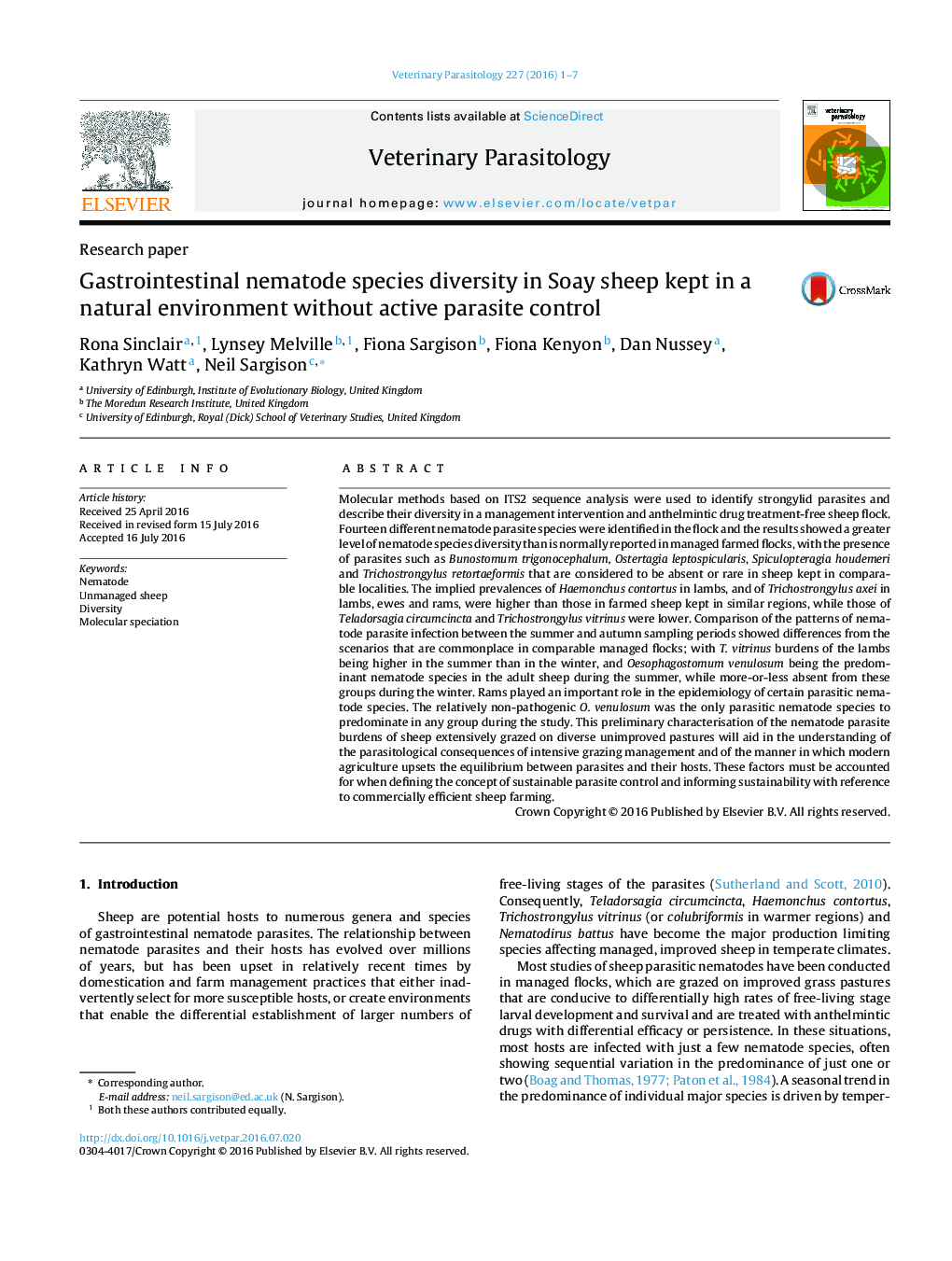| کد مقاله | کد نشریه | سال انتشار | مقاله انگلیسی | نسخه تمام متن |
|---|---|---|---|---|
| 5802069 | 1555649 | 2016 | 7 صفحه PDF | دانلود رایگان |
- Nematode speciation based on L1 ITS2 sequence analysis was unambiguous and applicable to the field-based study of nematode parasitology.
- Clade V nematode parasite diversity was greater in the intervention-free study flock than implied from managed, farmed flocks.
- Parasitic nematode species were identified that have not been previously reported in sheep, or are very unusual in mainland UK flocks.
- The seasonal prevalences of different nematode parasites in the study flock differed from those reported in comparable farmed flocks.
Molecular methods based on ITS2 sequence analysis were used to identify strongylid parasites and describe their diversity in a management intervention and anthelmintic drug treatment-free sheep flock. Fourteen different nematode parasite species were identified in the flock and the results showed a greater level of nematode species diversity than is normally reported in managed farmed flocks, with the presence of parasites such as Bunostomum trigonocephalum, Ostertagia leptospicularis, Spiculopteragia houdemeri and Trichostrongylus retortaeformis that are considered to be absent or rare in sheep kept in comparable localities. The implied prevalences of Haemonchus contortus in lambs, and of Trichostrongylus axei in lambs, ewes and rams, were higher than those in farmed sheep kept in similar regions, while those of Teladorsagia circumcincta and Trichostrongylus vitrinus were lower. Comparison of the patterns of nematode parasite infection between the summer and autumn sampling periods showed differences from the scenarios that are commonplace in comparable managed flocks; with T. vitrinus burdens of the lambs being higher in the summer than in the winter, and Oesophagostomum venulosum being the predominant nematode species in the adult sheep during the summer, while more-or-less absent from these groups during the winter. Rams played an important role in the epidemiology of certain parasitic nematode species. The relatively non-pathogenic O. venulosum was the only parasitic nematode species to predominate in any group during the study. This preliminary characterisation of the nematode parasite burdens of sheep extensively grazed on diverse unimproved pastures will aid in the understanding of the parasitological consequences of intensive grazing management and of the manner in which modern agriculture upsets the equilibrium between parasites and their hosts. These factors must be accounted for when defining the concept of sustainable parasite control and informing sustainability with reference to commercially efficient sheep farming.
The image is of the head of one of 39 adult female and 19 adult male Bunostomum trigonocephalum recovered from the small intestine on serendipitous postmortem examination of a lamb from the study flock. The presence of B. trigonocephalum has not been reported in mainland UK for several decades.130
Journal: Veterinary Parasitology - Volume 227, 30 August 2016, Pages 1-7
